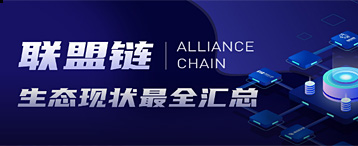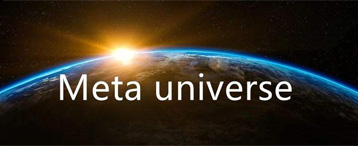-
Which blockchain challenge is skale helping the Ethereum ecosystem overcome?
 linkweb3
linkweb3 2023-02-11
2023-02-11 3195
3195 Tech
Tech
-
Summary:Which blockchain challenge is skale helping the ethereum ecosystem overcome? Skale Network aims to reduce costs and significantly increase trading speed by providing developers with their own DAPP specific Skale blockchain.
Ethereum's ecosystem is excellent, and Skale and Ethereum have an inherent connection. They together constitute a powerful "1st layer" solution. This dominant position has stimulated many other solutions to set up a bridge between them and Ethereum. The key to SKALE infrastructure is to deploy countless elastic side chains at the same time. These side chains are highly configured blockchain. Users can choose the size, consensus protocol, virtual machine, parent blockchain and other security measures. In this article, Skale will help the challenges of the Ethereum ecosystem overcome.
Why is the blockchain facing challenges?
The current power crisis has led to the prohibition of cryptocurrency mining last year, as well as the deportation of miners from Kosovo and Kazakhstan and cutting off their energy. To some extent, they must be blamed on the current situation. These countries need energy to keep their home warmth and the operation of enterprises.
Employment certificates will waste electricity and generate electronic waste. After 1.5 years, special computer systems used for cryptocurrency mining rarely can continue to run and eventually enter the waste landfill.
In addition to these issues, the average transaction speed of the Ethereum system is very slow, 15 trading per second. And it cannot be scaled. Cryptokitties, which allows users to raise and trades cartoon cats in 2017, led to the backlog of transaction on the Internet.
Given that cash venture capital companies are pouring into Web3, which is a futuristic paradigm. Among them, the application will be operated on the decentralized blockchain. Most of them are supported by Ethereum itself. The amount proved to be removed in the mining. This is the action plan.
In a dramatic incident called "merger", Ethereum plans to transition its entire network to the equity certificate. It claims that it will need to reduce energy by 99% and allow network expansion and may help it reach 100,000 transactions per second. In the first half of 2022.
In fact, the Ethereum has been planned to have been planned for six months. Creation such a model is challenging.
What is Skale?
Elastic side chain is an independent blockchain system integrated with the Ethereum platform. These side chains allow users to define their own security protocols and customize to meet the needs of DAPP. The potential DAPP developers can adjust the parameters of their side chain by selecting the required chain size, consensus protocol, virtual machine and parent blockchain. Once the user selects the setting of the side chain, the SKALE manager will automatically allocate 16 virtualized sub -nodes and a complete or part of the core node. Users can adjust their DAPPS settings by selecting the correct parent blockchain, consensus agreement and security protocol.
What is the Skale network chain?
Simply put, Skale is a medium that allows the execution of smart contracts and exchange messages on Skale networks to manage tokens and decentralized storage. Therefore, node processing is random selection and random rotation, adding a layer of security to the Skale network chain. The Skale chain looks great and well -designed to improve performance. Use the Skale chain as a user, you don't have to share or store per second with any other applications on the Internet. In Skale Chain, users decide what kind of chain they need to adapt to them and considerate their requirements. In addition to running a full -state smart contract, Skale Chains also provides decentralized storage, and can also successfully perform machine learning in smart contracts.
What problems can Skale solve?
Ethereum is experiencing explosive growth, which has led to a significant surge in network congestion, the prices of natural gas soaring sharply and the slow confirmation time. All these extensions have caused bad user experience and high costs. Even the simplest transactions will eventually hinder the development and adoption of the network. By cooperating with Ethereum, Skale Network aims to reduce costs and significantly increase transaction speed by providing developers with their own DAPP specific Skale blockchain. This will allow Web3 applications to compete with traditional applications on the basis of cost and performance, so that Ethereum can expand to the real -scale use level.
SKALE network helps Ethereum ecosystems with low -cost services and tools to developers. Its technology is supported by industry leaders such as Spartan Capital and Winklevoss Capital. Its founder aims to promote the decentralization and wide use of the blockchain system.
Skale Network uses a mining pool verification model to provide a safe way to verify transactions and tokens. The network provides backward compatibility with the ERC-20 platform. It also allows the client to use a security key and store the token in their choice.
Ethereum ecosystem is facing severe challenges. It must expand the scale, otherwise it will become unknown. The second -level solution is helpful, but if there is no solid foundation and business to provide services for them, these solutions will be useless.
Skale network aims to reduce congestion
Skale network uses nodes to handle Ethereum transactions. These nodes are composed of nodes and sub -nodes. The core of the node monitor the network and provide a user interface for the SKL token transaction. On the other hand, sub -nodes provide elasticity and participate in consensus mechanisms for the network. They also operated the Ethereum virtual machine and enabled inter -chain communication.
Skale is a network built on Ethereum and launched in 2018. Its founder is Stan Kladko and Jack O'Holleran, who all have professional knowledge in blockchain technology. Both have the background of cryptography and corporate infrastructure technology, and both contribute to the Ethereum Foundation.
Skale has a unique feature: it can run multiple side chains on the same network. This allows developers to use the most suitable sub -chain for their needs. They can also adjust the size, parent blockchain, agreement and security measures of each side chain. This helps to speed up transactions and reduce congestion in the Ethereum ecosystem.
Skale's multi -chain architecture is natively built on Ethereum. It allows faster transactions and use less gas at the same time. This function is an important supplement to cryptocurrencies such as Ethereum. It also helps Skale network against DDOS attacks. Although it is not completely no gas, it still allows developers to build fast smart contracts and highly configured side chains.
Skale is a open source decentralized elastic blockchain network based on Ethereum. Skale's architecture allows it to expand with the growth of Web3 and is very flexible. SKAL network can also provide a huge return on investment for verificationrs.
What is the side chain in the Skale network?
The side chain operates as an independent blockchain integrated with its father's network or main chain. The side chain uses two -way communication links between the two networks to maintain smart contract communication, so that they can operate. For example, developers who work on the Ethereum side chain will retain their access to the main network of Ethereum, and vice versa. As proved by Skale, the most common side chain function involves batch processing network transactions and executes them on the side chain, and then returns them to the main chain -in this example is Ethereum -for final collective confirmation. This improves the speed and scalability of the main network through the index factor.
When it is attached to the main chain, the side chain provides many advantages:
Test: The side chain enables developers to test new and unstable software without affecting the main chain. For example, if a project first deploys a new DAPP iteration on the side chain and it collapses, then damage will not affect the front -end application that is using on the main chain.
Volidation: Developers can deploy DAPP on the side chain to reduce congestion on the main chain. For example, during network congestion, the cost of Ethereum GAS increased, making the transaction cost high and time -consuming. The side chain removes the network activity from the main chain, which reduces the gasoline fee and improves the overall efficiency.
Security: As an independent blockchain, the side chain is responsible for its safety. If a hacker attack occurs, only the side chain is easily attacked; it has no effect on the parent chain.
Skale token: SKL encryption reward
SKALE network provides services through a framework that uses SKL tokens to integrate economic incentives and governance mechanisms. SKL tokens promote the four main functions on the SKALE network:
Safety and mortgage: SKL token holder or client mortgage their tokens to the verifications. These verificationrs run the Skale network by verifying blocks, executing smart contracts and protecting the network. As verifications, their efforts will receive SKL cryptocurrency rewards.
Payment: Developers use SLK tokens to pay Elastic Sidechain subscription fees.
Reward: Both the client and the verification person will receive the SKL encryption premium, which comes from the subscription fee paid by the developer and the tokens of inflation in the network.
Governance and voting: SKL tokens promote voting on the chain and control all economic parameters on the SKALE network.
SKL is an ERC-777 token, which means that it maintains backward compatibility with the ERC-20 platform and does not need a client to send its tokens to smart contracts. Instead, the client provides a security key to the pledged provider and stores their token in their choice. This subtle change in the governance agreement has further enhanced the security of the Skale network by introducing non -custody commission.
The above content introduces the challenge of Skale to help Ethereum blockchain overcome. Ethereum blockchain use of equity certificates, equity certificates and workload certificates are equally good in maintaining power decentralization. The combination of SKALE network and Ethereum main network will bring greater throughput, faster submission time, and lower GAS costs. At the same time, it still maintains the security regulations and guarantees in the Ethereum main network.
Disclaimer:As an open information publishing platform, shilian only represents the author's personal views and has nothing to do with shilian. If the article, picture, audio or video contains infringement, violation or other inappropriate remarks, please provide relevant materials and send it to: 2785592653@qq.com.
Hint:The information provided on this site does not represent any investment suggestion. Investment is risky, and you must be cautious when entering the market.
ShilianFan group:Provide the latest hot news, airdrop candy, red envelopes and other benefits, WeChat: rtt4322.
















